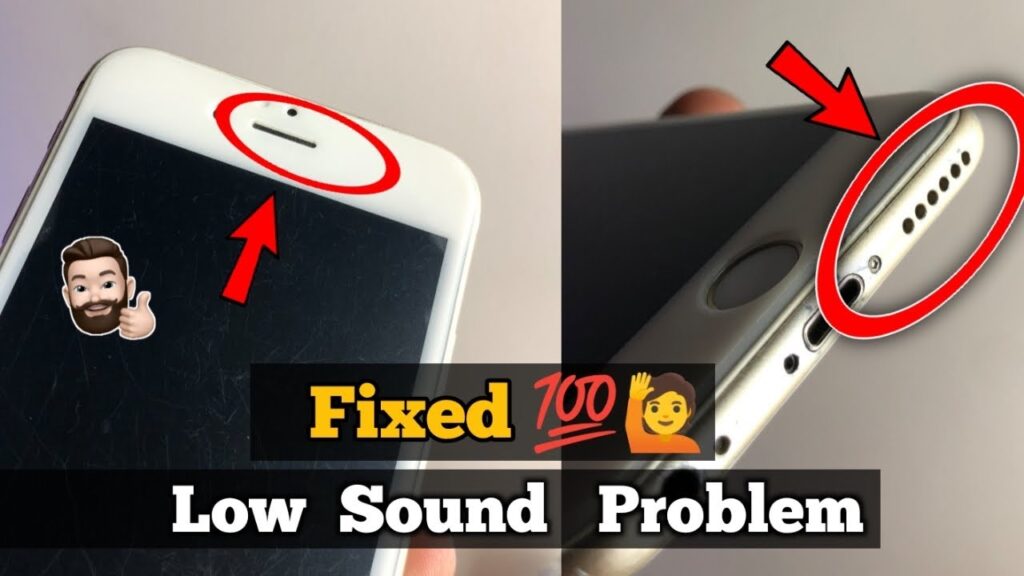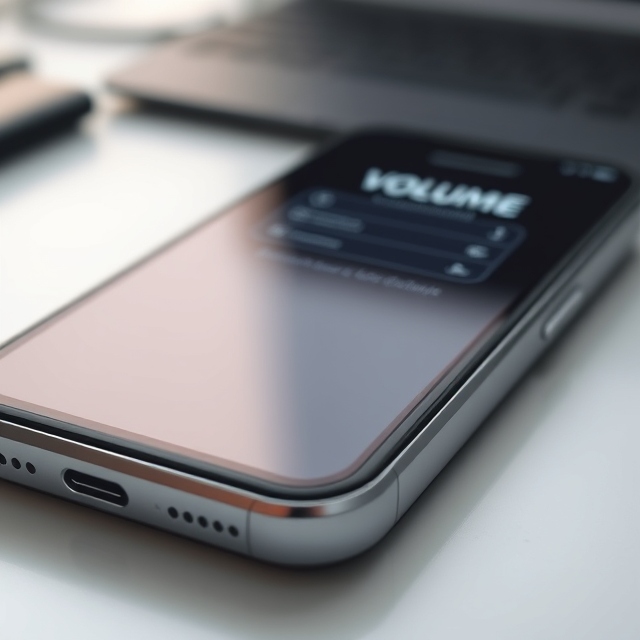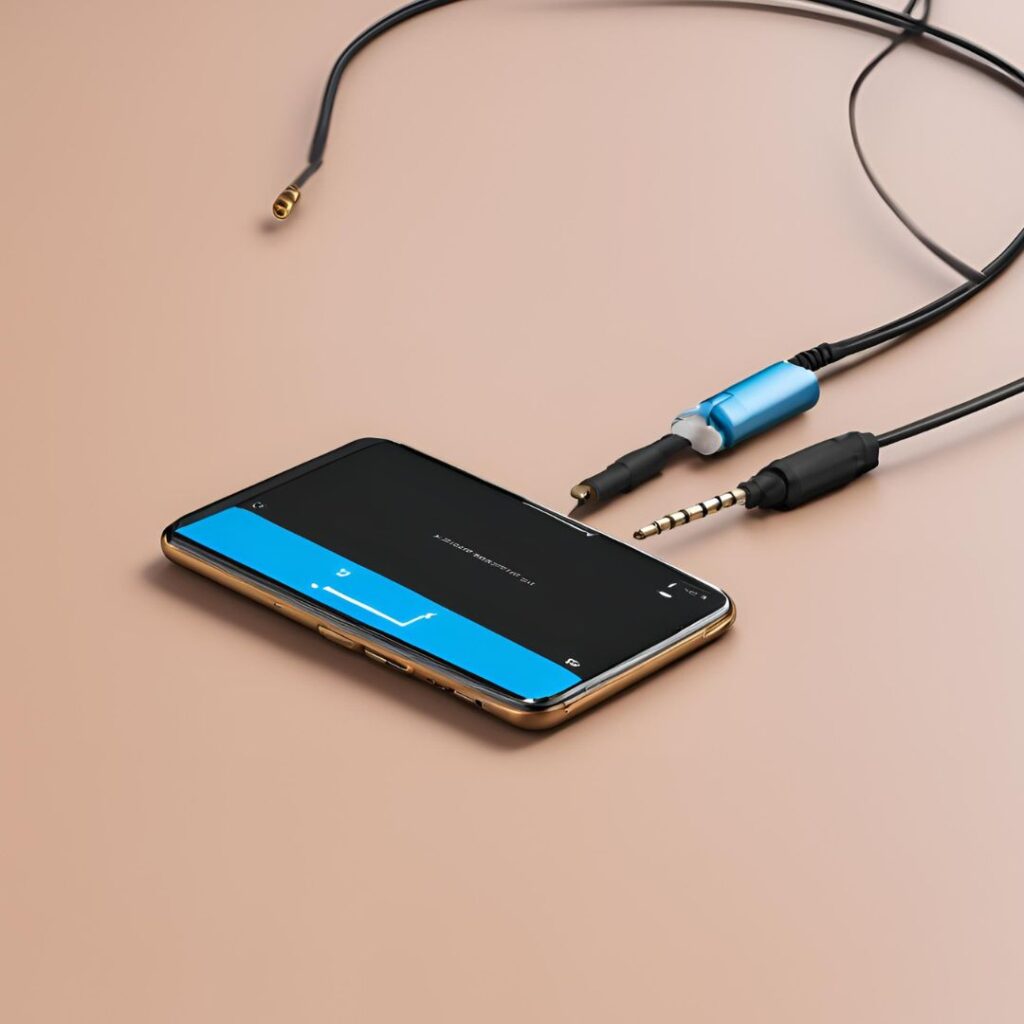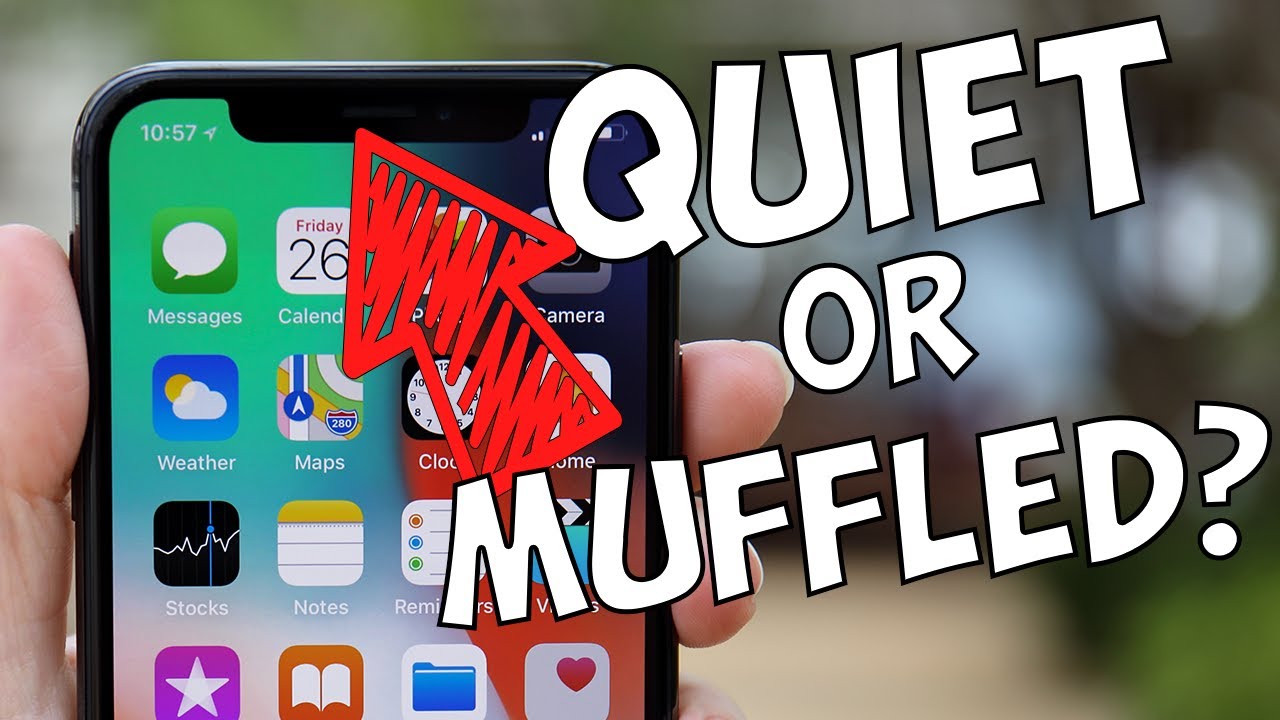When you find that your phone’s sound quality is suddenly poor or the speaker isn’t working at all, it can be a real headache. Whether you’re trying to listen to a podcast, enjoy your favorite music, or even make a call, clear sound is essential for a good experience. Fortunately, speaker issues can often be resolved with a bit of troubleshooting. This guide will walk you through various potential causes of speaker problems, providing expert solutions to restore clear audio to your device. By understanding the most common issues and following simple steps, you’ll be able to diagnose and potentially fix your phone’s sound problems.
Common Signs of Speaker Problems
It’s easy to miss the signs of a speaker malfunction, especially if the issue is subtle. Look out for things like distorted or crackling sounds, or if the audio sounds too faint even when the volume is turned up. If you’re unable to hear any sound at all during calls, videos, or music playback, this is also a clear sign of a problem. Sometimes, the speaker might sound fine at first but cuts out intermittently, or it may sound muffled, as though something is blocking the audio. Recognizing these signs early on can help you troubleshoot more efficiently, pinpointing the root cause of the issue.

Why Phone Speakers Malfunction?
There are several reasons why phone speakers might stop working or produce poor sound. Software glitches, like an update causing conflicts with your phone’s audio system, can result in sudden sound issues. Another common cause is physical damage. A drop or exposure to moisture can impair the internal components of your phone’s speaker. Dust and debris can also accumulate in the speaker grills, blocking sound and leading to muffled or distorted audio. Finally, malfunctioning internal components, like a damaged speaker membrane, may need professional repair. Understanding the different possibilities will help you determine the next steps for troubleshooting and repair.
Tools You’ll Need for Diagnosis
Most of the tools you need to troubleshoot your phone’s speaker issue are basic and easy to gather. A pair of headphones is handy for checking whether the issue is with the speaker or the audio source itself. A soft cloth or compressed air can be used to gently clean dust and debris from the speaker grills. If you’re feeling a bit more hands-on, a small screwdriver might be necessary to open the phone and check internal components, but this step is only for those who are comfortable with minor repairs. Having these tools available will make the process smoother, and in many cases, you might not need to go beyond the basics to solve the issue.
Basic Troubleshooting Steps
1. Check Your Phone’s Volume Settings
Sometimes, the most straightforward solution is the one we overlook: volume settings. It’s easy to forget that your phone has multiple volume controls for different functions, such as media volume, call volume, and alarm volume. If your phone’s speaker isn’t working, the first thing you should do is ensure that the volume is turned up, especially for media and calls. Additionally, it’s worth checking if the ringer volume is muted or set too low, as this can affect notifications and alarms as well. Start by pressing the volume buttons on the side of your phone and watching the on-screen volume indicator to ensure the levels are adequate.

Volume Control Verification
Make sure the physical volume buttons on your phone are functioning correctly. Sometimes, buttons can get stuck, damaged, or become unresponsive due to wear and tear. If the buttons seem fine, go to your phone’s settings and double-check the volume levels under “Sound & Vibration” or the equivalent section for your device. If the volume is still low or distorted, try toggling between different volume settings (e.g., call, media, and alarm) to confirm if one particular setting is malfunctioning. If adjusting the settings doesn’t work, there may be another underlying issue with the phone’s hardware.
Media vs. Call Volume Settings
One of the most common issues people face is confusion between media and call volume settings. These are often treated as separate entities by your phone, meaning the volume for videos, music, and other media won’t always be linked with the volume for calls. You may notice that you can hear the other person clearly during a call, but the media (music, YouTube, etc.) sounds faint or muffled. To resolve this, check both the media and call volume sliders in your phone’s sound settings. You might find that one is turned up while the other is muted or too low, which could explain the problem.
Silent Mode and Do Not Disturb Checks
Another common culprit behind phone speaker issues is the Silent mode or Do Not Disturb (DND) settings. If your phone is in silent mode, the sound output is turned off completely, which means you won’t hear calls, notifications, or media audio. Similarly, if your phone is set to Do Not Disturb, it may block all sound except for alarms or calls from specific contacts. Make sure neither of these modes is enabled. You can quickly check by looking at the small icon on your status bar or checking the settings. Sometimes, these modes get turned on accidentally, and disabling them is all it takes to restore normal audio output.
2. Test Audio Output Sources
Speaker Mode vs. Headphone Testing
When troubleshooting speaker issues, it’s essential to confirm whether the problem lies with the speaker itself or the audio source. The first step is to test your phone’s audio in different modes. Plug in a pair of headphones and check if the sound works through them. If you hear audio clearly through your headphones but not the speaker, this suggests the issue is with the speaker itself. On the other hand, if there’s no sound in either mode, the issue may be related to the audio source or a software problem. This simple test will give you a clearer picture of where the problem lies.
Bluetooth Device Interference
Another thing to check when troubleshooting your phone’s speaker is whether Bluetooth devices are interfering with the sound. If your phone is connected to a Bluetooth speaker or headset, it might be routing the audio to that device instead of the phone’s built-in speaker. To test this, turn off Bluetooth or disconnect any connected devices and see if the audio comes through your phone’s speaker. If turning off Bluetooth resolves the issue, you may have a setting that automatically connects to Bluetooth devices, or the device itself might be malfunctioning. This is an easy fix, as all you need to do is manage your Bluetooth connections in the settings.
Multiple Audio App Testing
If your phone’s audio is malfunctioning only in specific apps, the issue might be related to the app or the content you’re trying to play. Test the sound in different apps, such as Fix my speaker website ap , the music player, YouTube, or a voice call, to determine if the problem is widespread or isolated. If one app is the issue, it could be a bug or a settings conflict within that app. On the other hand, if sound is not working in any app, it may indicate a more fundamental issue with your phone’s audio system, requiring further troubleshooting or even a software update.
3. Clean Your Phone Speakers
Safe Cleaning Methods
Cleaning your phone’s speaker is often a simple and effective way to fix sound issues caused by dust, dirt, or debris. However, it’s important to be gentle during this process to avoid causing any damage to the internal components. Always turn off your phone before cleaning to prevent accidental damage or triggering touch screen functions. Using a soft cloth or microfiber cloth can help wipe away surface dirt without scratching the phone. Avoid using harsh chemicals or abrasive materials that could damage the speaker or screen. In most cases, a simple, dry wipe is all that’s needed.

Removing Debris and Dust
One of the most common causes of muffled or distorted sound is debris or dust trapped inside the speaker grills. Over time, tiny particles can accumulate and block the sound waves, resulting in lower audio quality. To remove this buildup, gently use a soft-bristled brush, like a clean toothbrush, to sweep away dust from the speaker grilles. You can also use compressed air to blow out dust without touching the speaker. Be sure to hold the canister at a distance to avoid damaging your phone. Regular cleaning helps prevent debris from affecting sound quality and keeps your phone sounding crisp.
Professional Cleaning Tools
If you’re dealing with a more serious buildup of dust, grime, or moisture, it might be worth using specialized tools designed for phone maintenance. There are small, fine-tipped cleaning tools available that are specifically made for phones and electronics. These tools can reach into tight areas without damaging delicate components. For stubborn dirt or moisture, professional cleaning services can also help. Many phone repair shops offer cleaning services that remove buildup without risking damage to your phone. If you’re uncomfortable cleaning the device yourself or if the speaker still isn’t working after cleaning, professional cleaning might be the best solution.
Advanced Diagnostic Steps
1. Software-Related Solutions
Operating System Updates
Sometimes, a software glitch or outdated system can be the cause of audio issues on your phone. Operating system updates often include bug fixes that address sound problems, so it’s a good idea to ensure your phone’s OS is up-to-date. Head to the settings and check if any updates are available for your device. Updating to the latest version may fix bugs or issues related to audio functionality, and it might even improve your phone’s overall performance. If you’ve recently updated and noticed sound problems, it’s possible that the update introduced a bug, in which case you may need to look into further troubleshooting steps, like rolling back the update or waiting for a subsequent patch.
Audio Driver Checks
In some cases, the issue may lie within the audio drivers or settings within your phone’s software. These drivers are responsible for interpreting audio signals and ensuring they’re sent correctly to the speaker. If there’s an issue with the audio driver, such as corruption or a misconfiguration, it can result in poor sound quality or no sound at all. You can check the audio settings or driver updates through your phone’s settings. Some devices allow you to reset or troubleshoot audio drivers, or you can try uninstalling and reinstalling apps that control audio playback. If the problem persists after trying these steps, a more in-depth system reset may be necessary.
App Conflict Resolution
Sometimes, specific apps can conflict with your phone’s audio system. If you notice that sound only stops working in particular apps, the app might be causing the issue. This could be due to a bug or an issue with the app’s settings. Start by updating the app to the latest version, as developers frequently release updates to fix bugs. If updating doesn’t help, you can try uninstalling the app and reinstalling it to see if that resolves the issue. If the issue persists, consider reaching out to the app developer or checking user forums to see if others are experiencing similar audio problems.
2. Hardware Testing
Speaker Component Testing
When software fixes don’t resolve the problem, it’s time to look at the hardware. Start by testing the speaker components of your phone. If you have a basic knowledge of electronics, you can carefully open the phone (if it’s not under warranty) and inspect the speaker itself. Ensure there are no visible signs of damage, such as cracks or burnt components. For a more thorough test, you can use a multimeter to check the resistance of the speaker or test for continuity. If you’re not comfortable with this level of testing, you can take your phone to a professional technician who can assess the speaker’s condition.
Connection Checks
Over time, the internal connections between the speaker and the motherboard can become loose or damaged. This could result in poor sound quality or complete audio failure. You may need to carefully check these connections to ensure they are secure. Again, if you’re unfamiliar with opening your phone or dealing with its internals, it’s best to leave this step to a professional technician. They can test the connections and even re-solder any components that may have come loose over time. In some cases, a faulty connection could be the main cause of sound issues.
Audio Jack Inspection
If you’re using wired headphones or connecting your phone to external speakers via the audio jack, the issue might not be with the internal speaker but with the headphone or audio jack itself. Check the audio jack for debris, dirt, or corrosion that could be affecting the connection. A clean cotton swab or compressed air can help clear out the jack. If the audio jack is damaged, it could be sending the audio signal elsewhere or interrupting the speaker function. If this is the case, it might require repair or replacement of the port.

3. Sound Quality Assessment
Distortion Analysis
When your phone’s sound is distorted, it could be due to a range of issues, from overdriven volume to faulty hardware. To assess the level of distortion, play a variety of sounds, including music, videos, and voice recordings. Listen for any buzzing, rattling, or unclear sounds. If distortion is present at high volumes, it could be a sign that the speaker is damaged and unable to handle the audio load. If distortion occurs at lower volumes, it may indicate an issue with the audio driver or software. Analyzing distortion helps narrow down whether the problem is mechanical or software-related.
Volume Level Testing
Next, test your phone’s volume levels to determine if the audio output is weak or inconsistent. Play content at different volume levels, and listen for any variations in sound quality. Is the volume too low even when the slider is set high? Does the sound fade in and out, or does it cut off entirely at a certain level? These inconsistencies can point to specific issues. Low or inconsistent volume can indicate problems with the speaker itself or the software controlling the audio output. If the sound only works intermittently, it could be a connection issue or a fault in the speaker.
Bass and Treble Performance
Finally, assess the sound quality by testing the bass and treble performance. Play music with heavy bass or high treble to evaluate if your phone’s speaker can accurately reproduce both ends of the sound spectrum. If you notice that bass sounds are muddy or the treble is too sharp or tinny, the speaker may be damaged or not functioning optimally. Some phones offer equalizer settings where you can adjust bass and treble levels—testing these can help determine if the speaker itself is limiting the audio output or if the issue lies with the software settings. If both bass and treble are poorly reproduced, it may require speaker replacement.
Common Phone Speaker Problems and Solutions
1. No Sound Output
Quick Fixes
When your phone produces no sound at all, the solution may be simpler than you think. First, ensure that your phone’s volume is turned up and not muted. Sometimes, a simple oversight can be the cause. If you’ve already checked the volume settings and the problem persists, try restarting the phone. A reboot can clear temporary software glitches that might be causing the issue, allowing your phone to reset its audio system. If sound still isn’t working, consider disconnecting any Bluetooth devices or headphones, as these can sometimes take priority over the built-in speaker.
System Reboot Benefits
A system reboot can often fix no sound issues by clearing out any temporary software bugs or conflicts that might be causing the speaker to stop working. When you restart your phone, it reloads all system settings and processes, which may help restore normal function. This is a quick and non-invasive solution, and in many cases, it resolves minor audio issues without needing any further troubleshooting.

Software Reset Options
If a simple reboot doesn’t work, you can try a software reset. A factory reset can restore your phone’s settings to their original state and eliminate any corrupt files or settings that could be causing the sound issue. However, this step should be used as a last resort because it erases all your personal data. Be sure to back up your phone before performing a factory reset. If you don’t want to lose your data, some phones allow you to reset only the settings, which can also help resolve issues without affecting your files.
2. Distorted Audio
Identifying Causes
If your phone’s audio is distorted—whether it’s crackling, fuzzy, or distorted at high volumes—there could be several reasons for this. Distortion often occurs when the speaker is damaged, but it can also be caused by software issues or misconfigured settings. It’s important to identify the cause before deciding on the right fix. Start by playing different types of media—music, videos, and calls—to see if the distortion is present across all audio sources or limited to specific apps or functions.
Volume-Related Issues
Sometimes, distortion is simply a result of the volume being set too high. When the speaker is pushed beyond its capacity, it can create a buzzing or crackling sound, especially at higher volumes. To test this, lower the volume and see if the distortion improves. If the distortion disappears at lower volumes, the speaker might be struggling to produce clear sound at high output. This could indicate a hardware limitation or, in some cases, a need for a speaker replacement.
Hardware Damage Signs
If the distortion persists even at lower volumes, it’s possible that the speaker itself has been damaged. Physical damage can happen over time due to drops, water exposure, or wear and tear. In this case, you might notice signs like scratches or cracks around the speaker grills, or the speaker may rattle or produce muffled sounds. If you suspect hardware damage, it’s a good idea to take your phone to a professional repair shop for a more thorough inspection and possible speaker replacement.
3. Intermittent Sound
Connection Problems
Intermittent sound, where audio cuts in and out unexpectedly, can be frustrating. One possible cause is a poor connection between the speaker and the phone’s internal components. This could be due to loose wires, connectors, or even the speaker being improperly seated. If you’re comfortable with opening your phone, you can check the internal connections to ensure everything is secure. However, if you’re not familiar with the phone’s internals, it’s best to take it to a technician who can properly diagnose and fix the issue.
Software Glitches
Another reason for intermittent sound could be software glitches. Apps may conflict with the audio system, or system updates could cause temporary issues. If you notice the problem occurring after a specific update or app installation, try uninstalling the app or rolling back the update. Additionally, resetting the phone’s software or performing a factory reset could help clear out any software-related issues that are causing the sound to cut out.
Hardware Loose Contacts
Loose internal connections can also cause sound to cut out randomly. Over time, the speaker’s wiring or connectors may loosen or degrade, especially if the phone has been dropped or exposed to moisture. These loose contacts can cause intermittent sound, as the connection is not consistent. If you’re experiencing this issue, you may need to have your phone opened up by a professional to ensure that all internal connections are secure. A technician can also check for other issues, such as a damaged speaker or motherboard.
